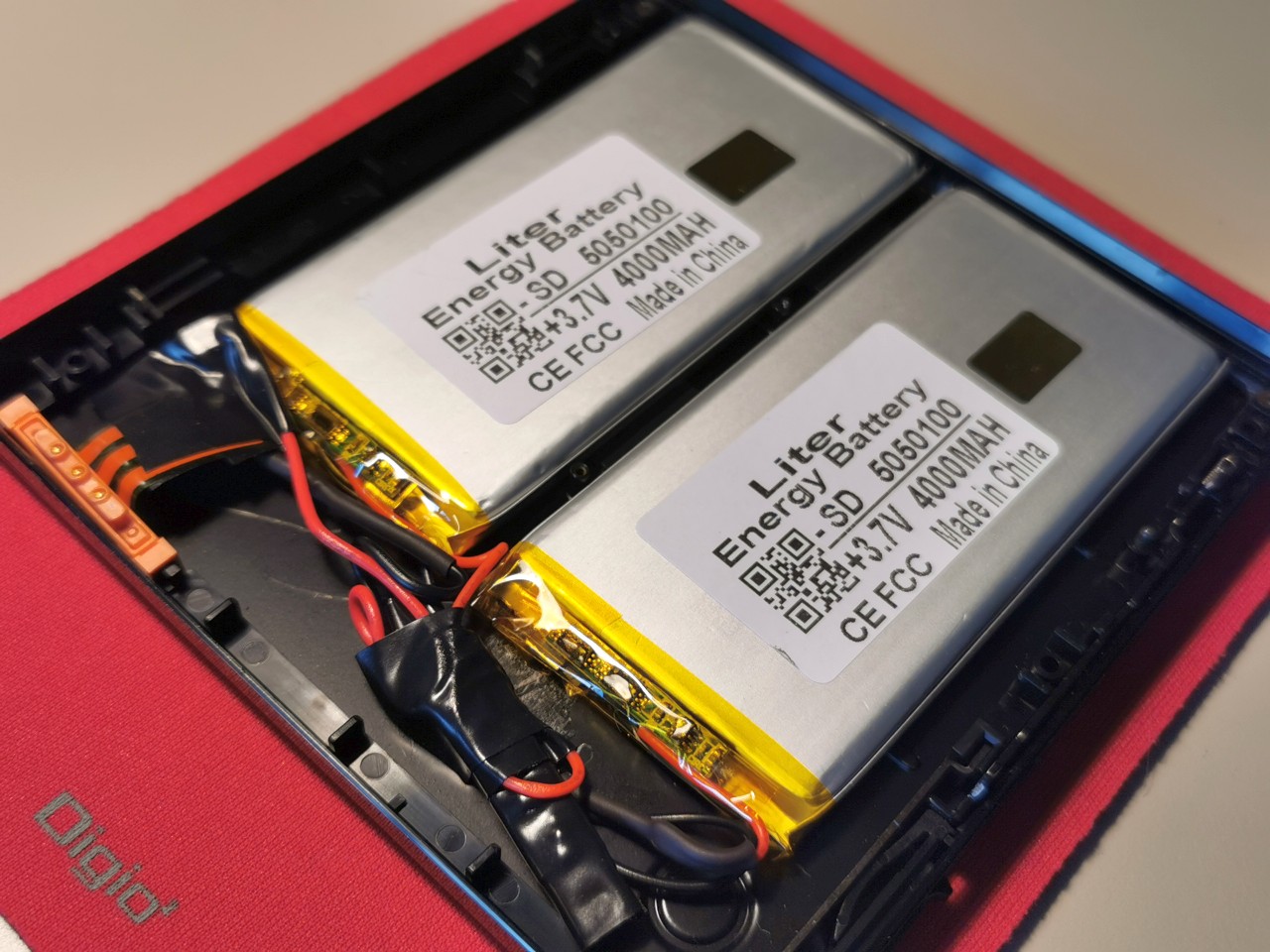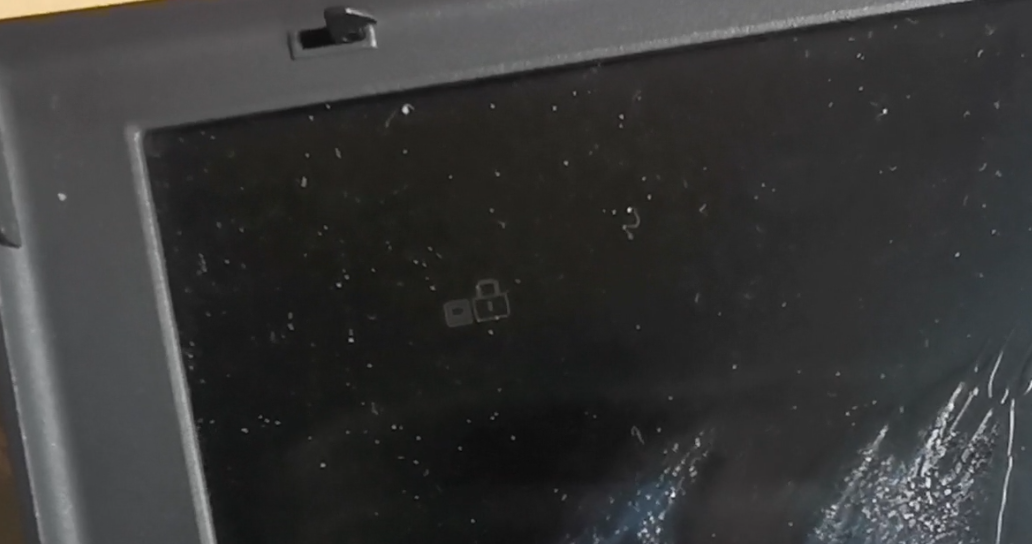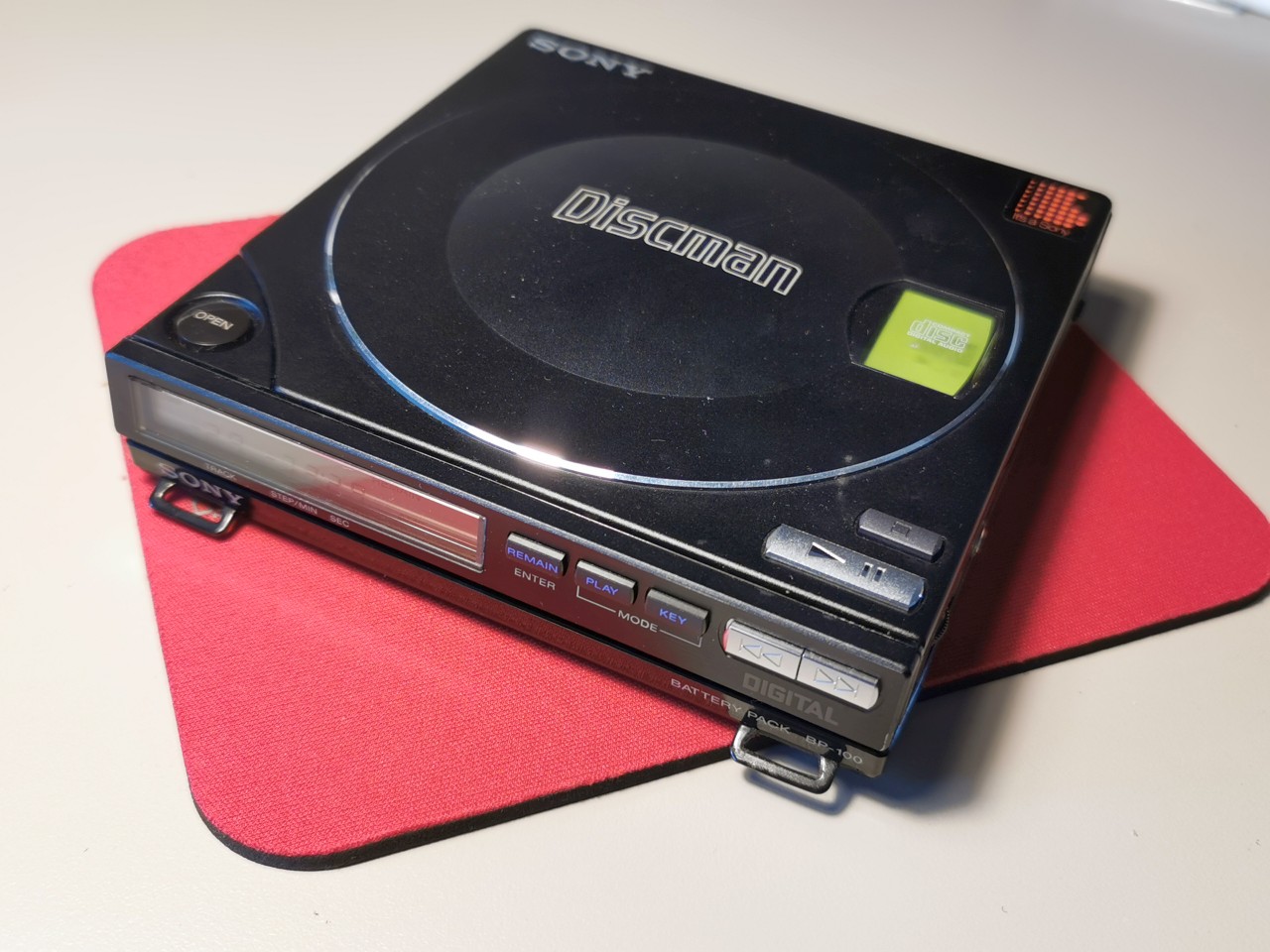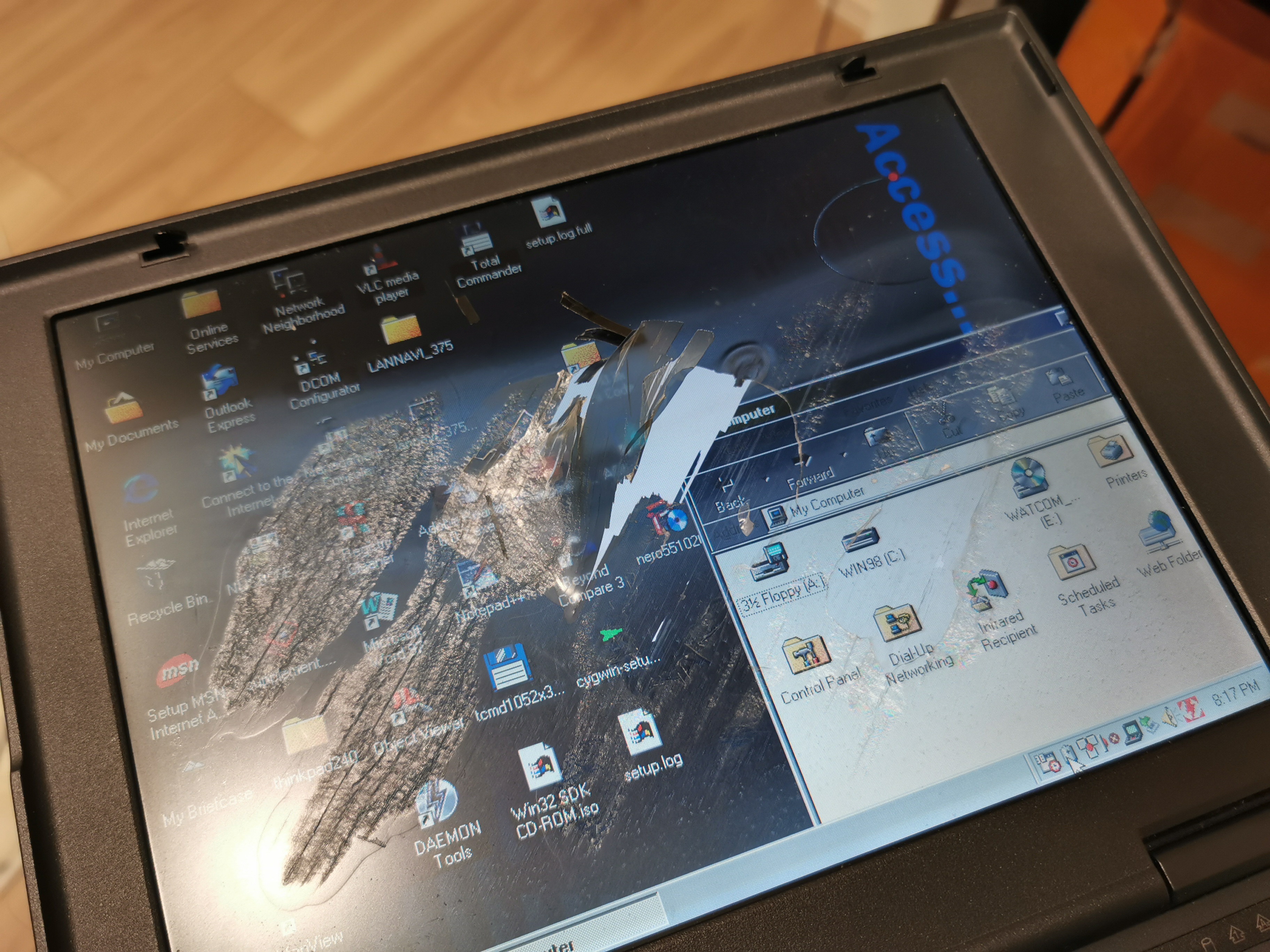In 2023, Japanese textbooks still come with Audio CDs. If you want to listen to them during your commute, you’ll have to go through the hassle to convert them to MP3 and store on your phone.
Or, you could get yourself a vintage Sony Discman portable CD player from 1988, with a heavy lead-acid battery pack, and use that instead. At least for me, the decision was easy.
The Sony Discman D-100 I bought second-hand from yahoo auctions of course didn’t work: it required a new plastic gear, a new laser, and voltage, PLL and laser focus bias adjustment. After that, I got myself a working vintage portable CD player.

These Discmans didn’t use AA batteries, instead, they came with a flat battery pack that gets sandwiched underneath the CD player. It is called BP-100, uses lead-acid cells, and is, as expected, quite heavy. It comes with two metal hooks to be able to strap it around your neck. The pack is rated at 6V/1000mAh.
After 30 years, the lead-acid cells were completely dead. Removing a few screws reveals three Lead-acid battery cells.

Initially I considered replacing the cells with LiFePO4 cells due to the similar voltage: using two LiFePO4 cells would result in about 6.6V. With a small BMS, that would be a nice drop-in replacement for the lead acid cells. After a long search, I struggled to find suitable sized flat LiFePO4 cells with satisfying capacity that would fit into the case, and investigated into standard Li-ion cells.
The first place to check was the manual of the D-100, which comes with complete schematics and layout.

The area circled in green is the charging connector. A mechanical switch within this connector switches the main supply voltage for the CD player from the power supply to the battery, if the charger is disconnected. That is why even with a battery pack connected, the CD player won’t power on if you have the charger connected to the charging connector, but not plugged into a power outlet.
Since every part of the CD player can also work with the 9V provided by the charger, it is safe to assume that it will also work with the 7.6V of two Li-ion battery packs. The only thing that needs to be adapted is the voltage of the charging circuit. By default, it charges with 7.4V. For Li-ion, the charge voltage needs to be raised to 8.4V.

Two pouch-shaped 4000mAh Li-ion cells with 100x50x5mm dimensions were a good fit. The cells I bought came with their own battery monitoring system (BMS), but I decided to add another two-cell BMS on top of that. Never use Li-ion batteries without a BMS, as there is a high risk that the cells will be overdischarged or overcharged.
This was my first time doing a Li-ion conversion, and I decided to try a cheap two-cell Chinese BMS rated at 2A.

VHB (Very High Boding) tape is used to keep the cells in place.

The cells connected to the BMS (wrapped in isolation tape) installed in the battery case. It was a little bit difficult to close the lid, as the cells are a tiny bit thicker than the original cells. If possible, try to use cells with 4.7mm thickness, or use thinner tape.

A quick test indicated that the new cells are working fine, and the Discman can now run on Li-Ion cells, providing more than 4x the power than the original pack!
While we can discharge the cells, we can’t recharge then at the moment. The charging circuit on the D-100 only charges up to 7.4V, which won’t be sufficient. This charge voltage needs to be adapted to about 8.3-8.4V.

A closer look at the schematics reveals how the charging circuit works. A PWM controls Q411, which, via coil L406, charges the capacitor C421, which maintains the charge voltage. Depending on the PWM duty cycle, the transistor will pump less or more charge into the output, thereby adjusting the output voltage.
The voltage is controlled using the resistors R439 and R434, which divide the output voltage into a lower voltage, suitable for the comparison logic inside the regulator block in green. The resistors R435 and R436 are used for manual adjustment of the output voltage, and by closing soldering bridges, the output voltage can be adjusted.
To raise the voltage, I decided to replace R439 by a different value, so that the regulator adjusts the output voltage to 8.3V. I decided to add 0.1V buffer to ensure to not overcharge the cells.
With that modification completed, the Discman Li-Ion conversion was completed. The battery can be charged using the factory charger, everything looks completely factory, but the newer cell chemistry allows for over 5 hours of runtime. With the charge logic, charging takes several hours. A smarter charging circuit designed for Li-Ion cells would be able to charge the cells much faster and more reliable, but I am very happy with my solution.



